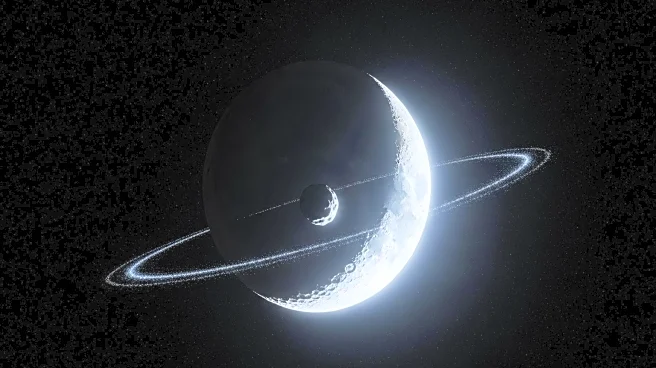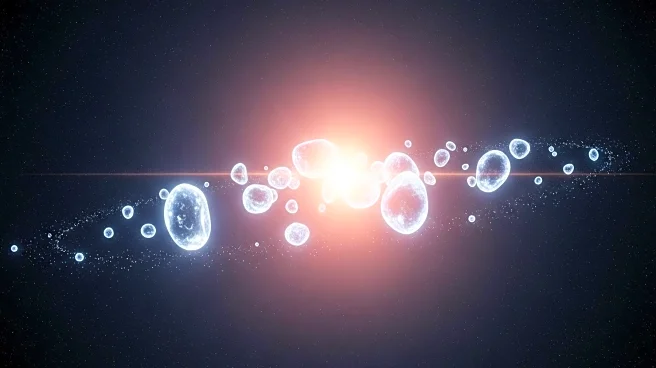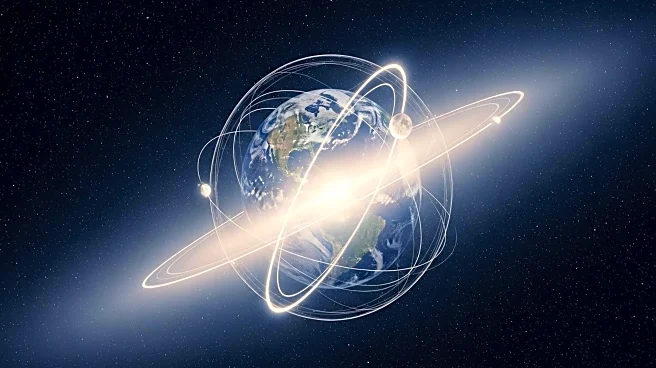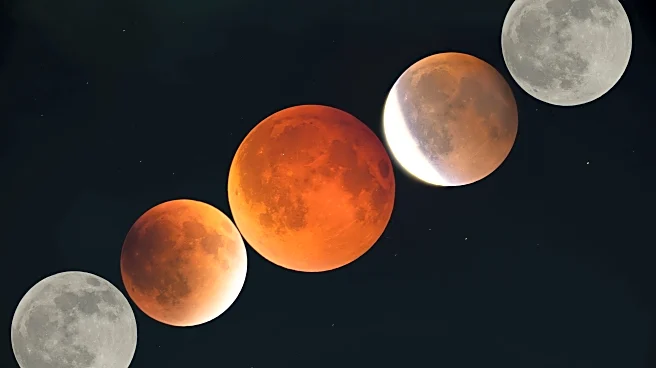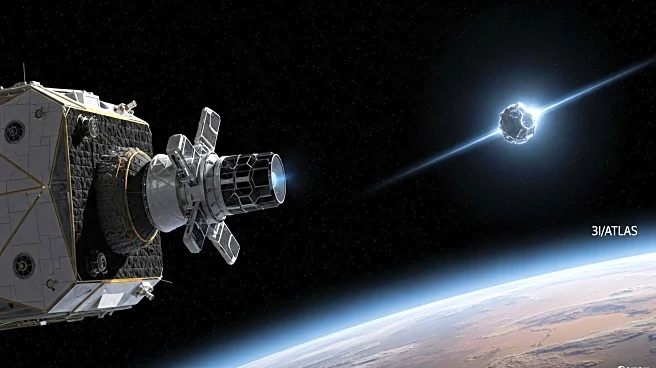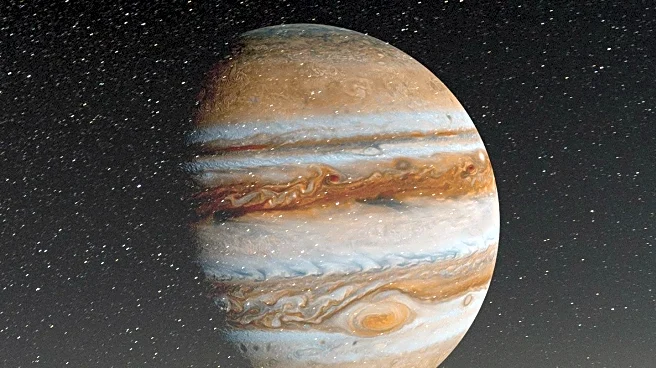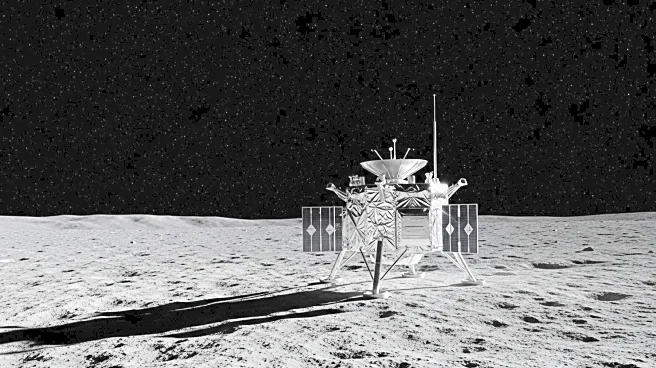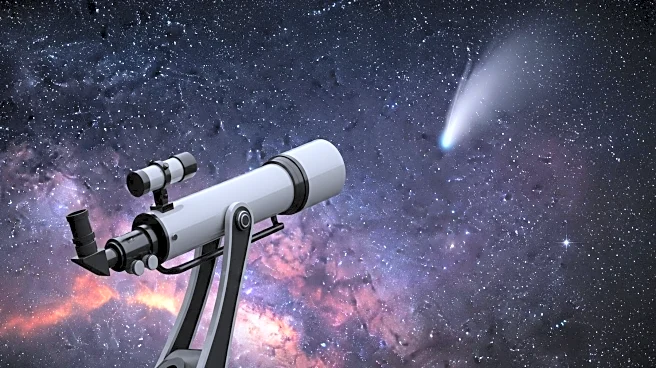What is the story about?
What's Happening?
Astronomers have identified a new quasi-moon, named 2025 PN7, which is orbiting Earth. This celestial body, approximately 62 feet in diameter, is the smallest and least stable of the known quasi-moons. Unlike the Moon, 2025 PN7 is not gravitationally bound to Earth but follows a quasi-satellite orbit, appearing to loop around Earth while actually orbiting the Sun. The discovery was made using the Pan-STARRS1 telescope in Hawaii, and further analysis was conducted by researchers at the Complutense University of Madrid. The quasi-moon has been in this orbit for about 60 years and is expected to remain for another 60 years before its path shifts away from Earth.
Why It's Important?
The discovery of 2025 PN7 provides valuable insights into the dynamics of near-Earth objects and their interactions with Earth and the Sun. Studying such quasi-moons helps astronomers understand gravitational influences and orbital mechanics, which are crucial for planetary defense strategies. Although 2025 PN7 poses no threat to Earth, monitoring these objects is essential for identifying potential hazards. Additionally, quasi-moons could serve as targets for future space exploration missions, offering opportunities for robotic probes or asteroid mining due to their proximity and extended presence near Earth.
What's Next?
Astronomers will continue to observe 2025 PN7 to refine predictions about its future trajectory and stability. As telescope technology advances, more quasi-moons may be discovered, enhancing our understanding of these celestial phenomena. The ongoing study of 2025 PN7 will contribute to the development of methods for detecting and classifying similar objects, potentially leading to new opportunities in space exploration and planetary defense.
AI Generated Content
Do you find this article useful?
